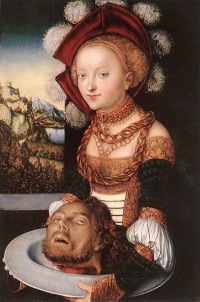Hungary
From The Art and Popular Culture Encyclopedia

|
Hungarian Dances, Hungarian Uprising, Elizabeth Báthory, The Grand Budapest Hotel, Thomas Szasz |

|
Related e |
|
Featured: |
The Republic of Hungary is a landlocked country in Central Europe, bordered by Austria, Slovakia, Ukraine, Romania, Serbia, Croatia and Slovenia. Its capital is Budapest.
Contents |
Culture
The culture of Hungary is rich and varied, from the twin cities of Buda and Pest on the Danube, to the Great Plain bordering Ukraine. Today's Hungary was formerly (until 1918) part of the Austro-Hungarian empire. Hungary has great folk traditions, producing embroideries, pottery, decorated buildings, and carvings. Hungarian music ranges from the rhapsodies of Franz Liszt to Roma and folk music.
Hungary has a great literature, with many poets and writers, although not many are well known abroad due to the limited prevalence of the Hungarian language as a Finno-Ugric language. Some noted authors include Sándor Márai and Imre Kertész, who have been gaining acclaim in recent decades. János Kodolányi was more known in the middle of the twentieth century in Italy and Finland. Sándor Márai has a growing popularity nowadays in Europe. Imre Kertész won the Nobel Prize in Literature in 2002. Péter Esterházy is known and popular in Austria and Germany, and Magda Szabó has become well-known in Europe recently as well.
Hungarian cuisine includes many pork and beef dishes, particularly goulash (a beef soup – gulya means a herd of cows, gulyás is like 'cowboy'), or a stew known in Hungarian as pörkölt. Dishes are often flavoured with paprika. Hungary also produces wine, including Tokaji from Tokaj.
Music
The music of Hungary consists mainly of traditional Hungarian folk music and music by prominent composers such as Ferenc Liszt (known in the West as Franz Liszt), Franz Schmidt, Dohnányi, Bartók, Kodály, and Rózsa. Traditional Hungarian music tends to have a strong dactylic rhythm, as in the Hungarian language the first syllable of each word is invariably stressed. Hungary also has a number of internationally renowned composers of contemporary classical music, including György Ligeti, György Kurtág, Péter Eötvös and Zoltán Jeney, among others.
Literature
Hungarian literature is literature written in the Hungarian language, predominantly by Hungarians. Hungarian literature may also include literature written in another language than Hungarian (mostly Latin) which is significant due to its Hungary-related topic or if it includes fragments in Hungarian. While virtually unknown in the Anglosphere for centuries, Hungary's literature gained renown by the end of the 20th century thanks to a new wave of internationally accessible writers like Antal Szerb, Sándor Márai, Imre Kertész and Magda Szabó.
See also Frigyes Karinthy.
See also
- List of Hungarians
- List of Hungarian painters
- List of museums in Hungary
- Renaissance architecture in Eastern Europe
- National symbols of Hungary
- Cinema of Hungary
- Elizabeth Báthory
- György Ligeti
- László Moholy-Nagy
- André Kertész
- Christa Winsloe
- Antti Lovag
- Hungarian Uprising
- Charlotte Bach
- Bela Lugosi
- Richard von Krafft-Ebing
- George Antheil
- Molnár
- Max Nordau
- Gregor Baci
- Mihály Zichy
- György Pálfi

